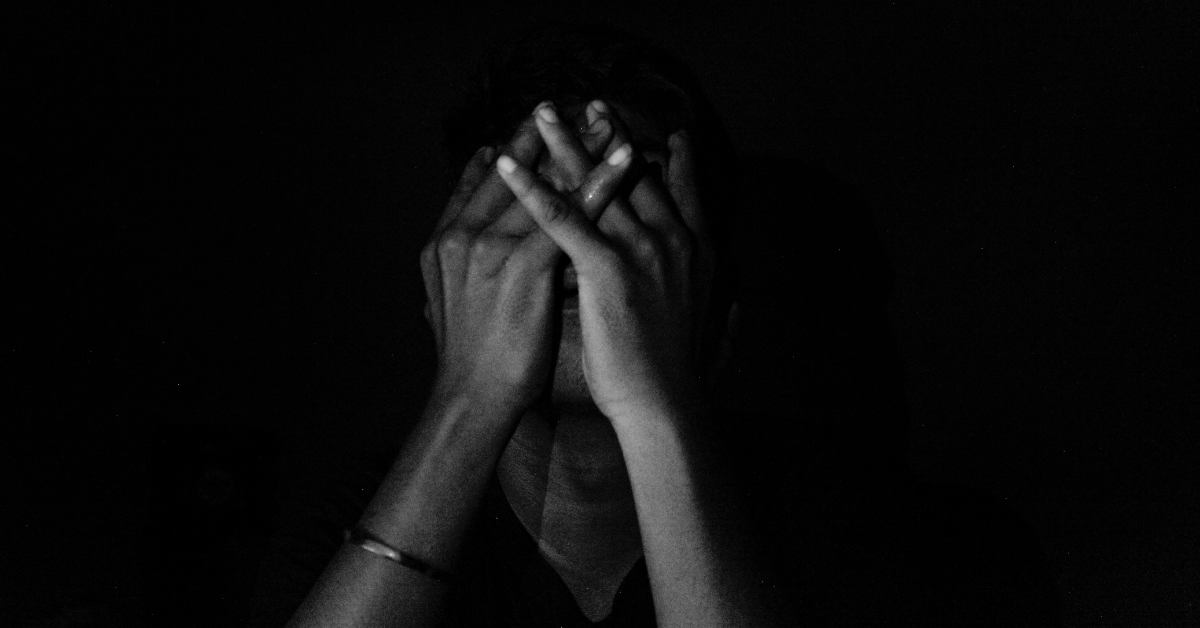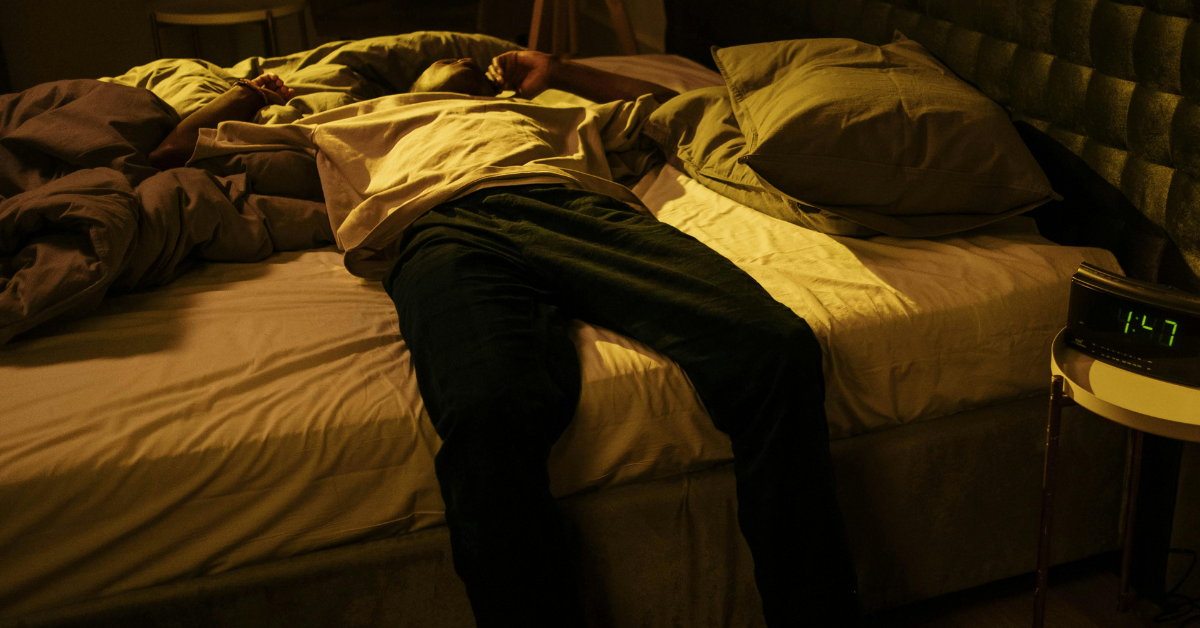Have you ever felt overwhelmed by persistent sadness, loss of interest, or a sense of hopelessness that seems to color every aspect of your life? You might be grappling with major depressive disorder, a serious mental health condition that has an impact on millions worldwide. This complex illness goes beyond mere sadness, influencing your thoughts, emotions, and daily functioning in profound ways.
As we dive into the world of major depressive disorder, you’ll gain insights into its diagnosis, symptoms, and treatment options. From understanding the criteria for major depressive disorder to exploring various therapeutic approaches, we’ll guide you through the journey of managing this challenging condition. Whether you’re seeking to help someone with depression or looking for the best medicine for depression, this comprehensive overview aims to shed light on the path to recovery and well-being.
Diagnosing Major Depressive Disorder
When you’re experiencing persistent feelings of sadness, hopelessness, or a lack of interest in activities you once enjoyed, you might be dealing with major depressive disorder. Diagnosing this condition involves a comprehensive evaluation of your symptoms, risk factors, and potential co-occurring disorders.
Symptoms and Diagnostic Criteria
To receive a diagnosis of major depressive disorder, you must experience at least five specific symptoms nearly every day for a minimum of two weeks. These symptoms should represent a change from your previous functioning and cause significant distress or impairment in your daily life.
The key symptoms include:
- Depressed mood most of the day
- Markedly diminished interest or pleasure in activities
- Significant weight loss or gain, or changes in appetite
- Sleep disturbances (insomnia or hypersomnia)
- Psychomotor agitation or retardation
- Fatigue or loss of energy
- Feelings of worthlessness or excessive guilt
- Diminished ability to think or concentrate
- Recurrent thoughts of death or suicide
It’s important to note that these symptoms should not be attributable to the effects of substance use or another medical condition.
Risk Factors and Causes
Major depressive disorder doesn’t have a single cause. Instead, it results from a complex interplay of biological, psychological, and environmental factors. Some key risk factors include:
Genetics: If you have a first-degree relative with major depression, you’re about three times more likely to develop the condition.
Brain chemistry: Imbalances in neurotransmitters, particularly serotonin, dopamine, and norepinephrine, play a significant role in depression.
Chronic medical conditions: Conditions such as heart disease, stroke, cancer, and diabetes can increase your risk of developing depression.
Stressful life events: Trauma, loss, or significant life changes can trigger depressive episodes.
Childhood experiences: Adverse childhood experiences and trauma are associated with a higher risk of depression later in life.
Personality traits: Certain personality traits, such as low self-esteem or being overly self-critical, may increase vulnerability to depression.
Co-Occurring Disorders of Major Depressive Disorder
Major depressive disorder often co-exists with other mental health conditions, making diagnosis and treatment more complex. Some common co-occurring disorders include:
Anxiety disorders: Approximately 60% of people with either anxiety or depression also experience symptoms of the other condition.
Substance use disorders: Nearly one-third of individuals with major depressive disorder also struggle with substance use issues.
Obsessive-compulsive disorder (OCD): There’s a strong link between OCD and depression, with many people experiencing symptoms of both conditions.
Post-traumatic stress disorder (PTSD): PTSD and depression often co-occur, sharing some overlapping symptoms like sleep disturbances and difficulty concentrating.
Eating disorders: Depression is common among individuals with eating disorders, and vice versa.
When these conditions co-occur, they can exacerbate each other, leading to more severe symptoms, poorer quality of life, and a higher risk of suicidal thoughts or behaviors.
Diagnosing major depressive disorder requires a thorough evaluation by a mental health professional. This typically involves a comprehensive psychiatric assessment, including a detailed history of your symptoms, medical background, and family history. Your healthcare provider may also conduct physical exams or lab tests to rule out other potential causes of your symptoms.
Remember, receiving an accurate diagnosis is the first step towards effective treatment and recovery. If you’re experiencing symptoms of depression, don’t hesitate to reach out to a healthcare professional for support and guidance.
Diagnostic Process of Major Depressive Disorder
The diagnostic process for major depressive disorder involves a comprehensive approach that combines clinical assessment, psychological evaluation, and medical tests. This multi-faceted approach helps healthcare providers to accurately diagnose the condition and rule out other potential causes of depressive symptoms.
Clinical Assessment
The first step in diagnosing major depressive disorder is a thorough clinical assessment. During this process, your healthcare provider will conduct an in-depth interview to understand your symptoms, medical history, and mental health background. To receive a diagnosis of major depressive disorder, you must experience at least five specific symptoms nearly every day for a minimum of two weeks. These symptoms should represent a change from your previous functioning and cause significant distress or impairment in your daily life.
Two key symptoms that must be present are:
- Depressed mood most of the day
- Markedly diminished interest or pleasure in activities
Your provider will also assess the severity and duration of your symptoms, as well as their impact on your daily functioning. They’ll inquire about any potential triggers, such as stressful life events or significant changes, that might have contributed to the onset of your symptoms.
Psychological Evaluation
Following the clinical assessment, a psychological evaluation is often conducted to further assess your mental state and emotional well-being. This evaluation may involve the use of various screening tools and questionnaires designed to measure the presence and severity of depressive symptoms.
Some commonly used screening instruments include:
Patient Health Questionnaire-9 (PHQ-9): This nine-item questionnaire assesses your mood and everyday activities, helping your doctor determine the severity of your depression.
Beck Depression Inventory (BDI): A 21-question, multiple-choice self-report that measures the severity of depression symptoms and feelings.
Hamilton Depression Rating Scale (HDRS): Also known as the HAM-D, this questionnaire is used by healthcare professionals to rate the severity of your depression.
Center for Epidemiologic Studies Depression Scale (CES-D): A 20-item self-reported scale designed to measure how often you’ve experienced depressive symptoms.
These screening tools provide valuable insights into your mental state and help guide the diagnostic process. However, it’s important to note that while these instruments are helpful, they are not definitive diagnostic tools. The results from these screenings are used in conjunction with the clinical assessment to form a comprehensive picture of your mental health.
Medical Tests
To ensure a thorough diagnosis and rule out other potential causes of your symptoms, your healthcare provider may order several medical tests. These tests are crucial in identifying any underlying medical conditions that could be contributing to or mimicking depressive symptoms.
Common medical tests that may be conducted include:
Complete Blood Count (CBC): This test checks for anemia or other blood disorders that can cause fatigue and mood changes.
Thyroid Function Tests: An underactive or overactive thyroid can cause symptoms similar to depression.
Vitamin B-12 Levels: Deficiency in this vitamin can lead to symptoms that mimic depression.
Electrolyte Panel: Imbalances in electrolytes can affect mood and energy levels.
Liver Function Tests: Liver problems can impact mood and cognitive function.
Toxicology Screening: This test checks for the presence of drugs or alcohol that might be influencing your symptoms.
In some cases, your doctor might recommend additional tests such as an electrocardiogram (EKG) to check for heart problems, or brain imaging studies like CT or MRI scans to rule out neurological issues.
Remember, the diagnostic process for major depressive disorder is comprehensive and tailored to your individual situation. It’s crucial to be open and honest with your healthcare provider about your symptoms and experiences to ensure an accurate diagnosis and appropriate treatment plan.
Treatment Options for Major Depressive Disorder
When you’re dealing with major depressive disorder, it’s essential to understand that there are various treatment options available to help you manage your symptoms and improve your quality of life. The initial treatment for major depressive disorder typically includes medications, psychotherapy, or a combination of both. Research has shown that combination treatment, including both medications and psychotherapy, is often more effective than either of these treatments alone.
Inpatient Treatment
In some cases, inpatient treatment may be necessary for individuals with severe depression or treatment-resistant depression. This type of treatment involves staying in a safe and stable environment while receiving intensive care for your depressive symptoms. Inpatient treatment may be recommended if you’re at risk of harming yourself or others, or if outpatient treatment hasn’t been effective.
During inpatient treatment, you’ll have access to a range of therapies and treatments, including medication management, individual therapy, group therapy, and holistic therapies such as yoga and meditation. You’ll be closely monitored by a team of mental health professionals, including psychiatrists, therapists, and nurses, who will provide around-the-clock care.
Outpatient Treatment
Outpatient depression treatment allows you to receive care without staying overnight in a mental health facility. This option is often suitable if you don’t need constant or daily support and feel able to cope while living at home. Outpatient treatment typically involves regular sessions with a mental health professional, such as a therapist or psychiatrist.
Common components of outpatient treatment include:
- Cognitive Behavioral Therapy (CBT)
- Behavioral Activation (BA)
- Dialectical Behavior Therapy (DBT)-informed skills
- Medication management
- Individual, group, and family therapy
- Experiential therapy
Outpatient treatment can be highly effective and allows you to maintain your daily routine while receiving the support you need to manage your depressive symptoms.
Pharmacological Treatment
Medications play a crucial role in the treatment of major depressive disorder. The most commonly prescribed medications for depression include:
Selective Serotonin Reuptake Inhibitors (SSRIs): These are often the first-line treatment due to their effectiveness and generally milder side effects compared to other antidepressants.
Serotonin-Norepinephrine Reuptake Inhibitors (SNRIs): These medications are often used for depressed patients with comorbid pain disorders.
Atypical Antidepressants: This category includes medications like bupropion and mirtazapine, which can be prescribed as monotherapy or as augmenting agents.
Tricyclic Antidepressants (TCAs) and Monoamine Oxidase Inhibitors (MAOIs): These older classes of antidepressants are less commonly used due to their side effect profiles but may be effective for some individuals.
It’s important to work closely with your healthcare provider to find the right medication and dosage for your specific needs. Remember that it may take some time to find the most effective treatment, and you may need to try different medications or combinations before finding what works best for you.
Psychotherapy Approaches to Treating Major Depressive Disorder
Psychotherapy plays a crucial role in treating major depressive disorder, offering effective strategies to help you manage symptoms and improve your overall well-being. Two primary evidence-based approaches stand out for their effectiveness in treating depression: cognitive-behavioral therapy (CBT) and interpersonal therapy (IPT).
Cognitive Behavioral Therapy
Cognitive-behavioral therapy is a well-documented and validated psychotherapeutic method for treating major depressive disorder. CBT focuses on modifying dysfunctional behaviors and cognitions that perpetuate depressive symptoms. This approach helps you identify and challenge irrational beliefs and distorted thoughts, replacing them with more balanced and constructive ways of thinking.
During CBT sessions, you’ll work with your therapist to:
- Recognize negative thought patterns and behavioral responses
- Develop strategies to modify these patterns
- Learn coping skills to manage stressful situations
CBT is typically a short-term treatment, often requiring only up to 20 sessions. However, you can continue seeing your therapist for as long as needed. The effectiveness of CBT depends on your capacity to observe and change your own beliefs and behaviors. To overcome potential challenges, simpler techniques like behavioral activation have been developed, especially for primary care management.
Interpersonal Therapy
Interpersonal therapy (IPT) is another evidence-based approach for treating major depressive disorder. IPT focuses on identifying triggers of depressive symptoms or episodes, which may include losses, social isolation, or difficulties in social interactions. This therapy aims to help you:
- Recognize and address interpersonal issues
- Improve problematic relationships
- Enhance social skills and support systems
IPT is particularly effective in treating mild to moderate forms of clinical depression and has shown comparable results to short-term treatment with antidepressants. Like CBT, IPT is a time-limited treatment, typically lasting 12-16 weeks.
During IPT sessions, you’ll work with your therapist to:
- Identify and resolve interpersonal conflicts
- Adapt to life changes and transitions
- Process grief and loss
- Improve communication skills
Somatic and Alternative Treatments
Electroconvulsive Therapy
Electroconvulsive therapy (ECT) is a procedure that uses a mild electrical current to cause a brief seizure in the brain. This treatment has proven to be effective for severe mental health conditions, including major depressive disorder, especially when other treatments haven’t worked. During ECT, you’re put under general anesthesia, so you won’t feel any pain or discomfort during the procedure.
ECT can be particularly beneficial for people with severe depression who haven’t responded to medications or psychotherapy. It’s also an option when rapid improvement is necessary, such as when a person is at high risk of suicide. The procedure is typically done two to three times a week for a total of six to twelve treatments.
While ECT has been stigmatized in the past due to its portrayal in media, modern ECT is much safer and more refined. Side effects can include confusion and memory loss, but these are usually temporary. Many people begin to notice improvement in their depressive symptoms after about six treatments.
Transcranial Magnetic Stimulation
Transcranial magnetic stimulation (TMS) is another non-invasive procedure that uses magnetic fields to stimulate nerve cells in the brain to improve symptoms of major depressive disorder. Unlike ECT, TMS doesn’t require anesthesia and doesn’t cause seizures or memory loss.
During a TMS session, an electromagnetic coil is placed against your scalp near your forehead. The coil delivers magnetic pulses that stimulate nerve cells in the region of your brain involved in mood control and depression. It’s thought to activate regions of the brain that have decreased activity during depression.
TMS is typically used when standard treatments such as medications and psychotherapy haven’t been effective. It’s generally considered safe and well-tolerated, with common side effects including scalp discomfort and headaches. A typical course of TMS involves daily sessions, five times a week, for four to six weeks.
Lifestyle Modifications
While somatic treatments like ECT and TMS can be effective for severe cases of major depressive disorder, lifestyle modifications can also play a crucial role in managing depressive symptoms. These changes can complement other treatments and may help prevent relapse.
Exercise is one of the most effective lifestyle modifications for depression. Regular physical activity has been shown to improve mood and reduce depressive symptoms. Even moderate exercise, such as a daily 30-minute walk, can have significant benefits.
Diet is another important factor. While there’s no specific “depression diet,” eating a balanced, nutritious diet can help support overall mental health. Focus on fruits, vegetables, whole grains, lean proteins, and healthy fats.
Sleep hygiene is crucial for managing depression. Establishing a regular sleep schedule, creating a relaxing bedtime routine, and avoiding screens before bed can help improve sleep quality and mood.
Social interaction is also vital. Maintaining connections with friends and family, joining support groups, or volunteering can provide emotional support and reduce feelings of isolation often associated with depression.
Mindfulness and relaxation techniques, such as meditation or deep breathing exercises, can help manage stress and improve mood. These practices can be particularly helpful when combined with other treatments for major depressive disorder.
Remember, while these lifestyle modifications can be beneficial, they should not replace professional medical advice or prescribed treatments for major depressive disorder. Always consult with your healthcare provider before making significant changes to your treatment plan.
Other Evidence-Based Therapies
While CBT and IPT are the most well-established psychotherapy approaches for major depressive disorder, several other evidence-based therapies have shown promise in treating depression:
Problem-Solving Therapy (PST): This approach combines cognitive and interpersonal elements, focusing on negative assessments of situations and problem-solving strategies. PST has been used effectively in preventing depression among the elderly and treating patients with mild depressive symptoms, especially in primary care settings.
Mindfulness-Based Cognitive Therapy (MBCT): MBCT combines elements of CBT with mindfulness-based stress reduction techniques. Studies have shown that eight weeks of MBCT treatment during remission can reduce the risk of relapse, making it a potential alternative to reduce or even stop antidepressant treatment without increasing the risk of depressive recurrence.
Psychodynamic Therapy: This approach focuses on intrapsychic conflicts related to shame, repressed impulses, and problems in early childhood that lead to low self-esteem and poor emotional self-regulation. Psychodynamic therapy has shown efficacy in the acute phase of major depressive disorder.
Supportive Therapy: While not as structured as CBT or IPT, supportive therapy offers empathetic listening, paraphrasing, and encouragement to help you ventilate feelings, increase self-esteem, and enhance adaptive coping skills.
Remember, the choice of psychotherapy approach depends on your individual needs, preferences, and the severity of your depression. Your healthcare provider can help you determine the most suitable treatment option or combination of treatments to address your specific situation and guide you towards recovery from major depressive disorder.
Treating Major Depressive Disorder at Milton Recovery Centers
At Milton Recovery Centers, we understand that major depressive disorder requires a comprehensive and compassionate approach to treatment. Our team of experienced professionals is dedicated to providing personalized care that addresses the unique needs of each individual struggling with depressive symptoms.
We offer a range of evidence-based therapies and treatment options to help you manage your major depressive disorder effectively. Our approach combines the latest advancements in psychiatric management with a supportive environment that fosters healing and recovery.
We’re committed to providing a nurturing environment where you can feel safe, supported, and valued throughout your recovery journey. Our team creates a space where therapy becomes a comforting conversation with a trusted professional, guiding you through your challenges with compassion and understanding.
If you or someone you know is struggling with major depressive disorder, remember that help is available. With the right treatment and support, it’s possible to manage depressive symptoms effectively and reclaim a fulfilling life. We’re here to support you every step of the way on your path to recovery.





8 thoughts on “Major Depressive Disorder: From Diagnosis to Treatment Implementation”
This was a very interesting read. I didn’t know that so many cases had other associated issues with them, as well.
Great post and overview that sheds light on the path to recovery and well-being for major depressive disorders, It is interesting to know there are so many therapies and lifestyle modifications that can help. The diagnosis, symptoms, and treatment options listed here will be helpful to anyone looking to manage this challenging condition.
It sounds like Milton Recovery Centers is an incredible space to find a solution to depression, for one who is suffering. It’s so important to know that there’s a light at the end of the tunnel!
I had no idea it was so in depth with symptoms and co-occurring disorders. The options for treatment you listed from meds to different types of therapy is great to know for those struggling. Nice to know there are personalised approaches and support. This is good for anyone who is dealing with depression or wants to learn more. Thanks!
I didn’t realize there were medical tests for depression! Thanks for all the detailed information.
This is such a great read and such a very important topic to discuss. So many people suffer from major depression and I’m glad to see your companies approach combines a lot of support.
as someone who has suffered from post traumatic stress disorder, i applaud your work with those suffering with depression. keep up the good work.
Knowing the signs before hand is so important! Thanks for the breakdown on this subject it is such a great one to cover.